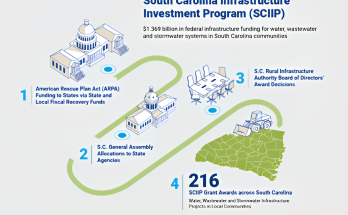Water and sewer utilities are normally operated as an enterprise fund within a municipal organization. All that means is that the utilities operate like an enterprise (i.e. a business) where the the revenues earned are supposed to be used to support the business without subsidization from a city’s general (i.e. taxes) fund. Since utilities are supposed to be self-supporting, it follows that utility managers need to plan for unforeseen contingencies. Such contingencies can range from normal ebb and flow of cash flow from operations, to hedging against unusually wet or dry years, to all kinds of emergency needs. Reserve funds are a prudent way to manage these types of things. Without adequate reserves, every blip on the financial radar is bound to cause a panic and may cause the utility to rush out to capital markets unprepared, or worse yet the utility may not be able to respond to the unplanned event with potentially disastrous consequences.
Most utility managers understand the need for adequate reserves even if their city leaders don’t always. In tough times, a utility’s reserve can be a tempting pot of gold that some city leaders have a hard time staying away from. In the Chicago area, we see this recent example where the City of Park Ridge couldn’t resist the temptation and depleted the reserves in order to pay for normal expenses in lieu of a needed rate increase. The city council in this case depleted the reserves against the recommendation of the utility manager because at least one councilmember said that the reserve level was excessive. All of this begs the question: how much is enough reserve, and how much is too much?
A good rule of thumb is to use benchmarks available from the various credit rating agencies. Fitch, Moody’s, and S&P all have median levels for “days cash on hand” that provide some insight on reserve levels. In a recent publication, Fitch Ratings provided a median Days Cash on Hand for AA-rated water and sewer agencies of 266 days. The figure is calculated as:
Days Cash on Hand = $ Ending Fund Balance / ($ Annual O&M Expenses / 365)
Let’s say there is an ending fund balance of $25m and annual O&M expenses are $15m. The Days Cash on Hand would be 25/(15/365) = 625 days. If the ending fund balance were just $8m, the Days Cash on Hand would be just 200 days, and so on. If you want your utility to be in the same league as AA-rated credits, then you would want at least 266 days of cash (the AAA level is 623 days, by the way). What the medians tell us is that highly rated credits take care of their systems with reduced risk to potential bondholders; the Days Cash on Hand is one such characteristic of highly rated agencies. It follows that lower levels of cash on hand is seen as at least one characteristic of riskier operations.
Is this guideline enough for your utility? Circumstances vary, of course. Some utilities may need even higher reserves for individual circumstances, but the above is a pretty good place to start.
Be Sociable, Share!


